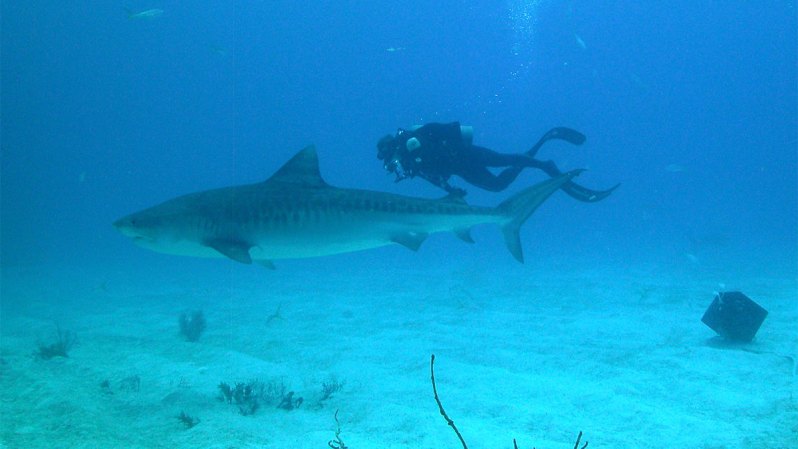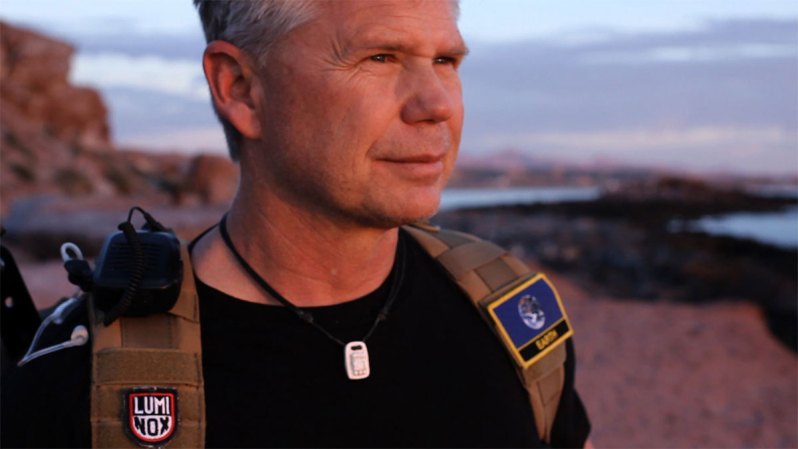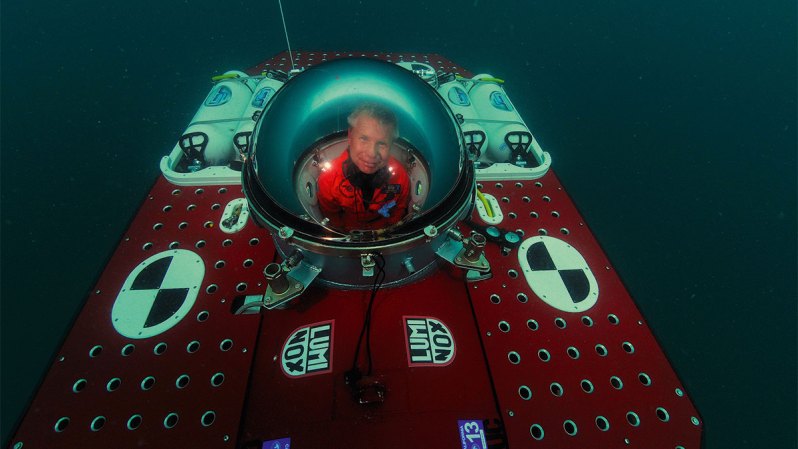“A drill fractured and went through my finger right before you rang. I just put a few stitches in; I have sewn myself up many times!”
This is how my conversation begins with the warm and witty Scott Cassell, the man behind The Undersea Voyager Project. I heard about him through the team at Luminox who donate a percentage of the profits from the Navy Seal Colormark 3955 to his organization. I wanted to learn more about this American explorer, underwater filmmaker and counter-terrorism operative so I called him up for a chat. It was one of the longer and more exciting and passionate interviews I have done.
How did you get connected to Luminox?
I was doing a show on the Discovery Channel and someone called me and I thought it was a sales call so I hung up on him. This guy called and said, ‘I want to name a watch after you!’ So I hung up, then Barry called back and said, “I am serious.” (Barry Cohen was the previous CEO of Luminox.) He invited me out to meet him and we developed a relationship.
How did he find you?
He found me on the Internet. He and Andres, the owner of Mondaine, a Swiss watch company, were looking for someone in ocean conservation and my name kept popping up. Interestingly enough, we actually used Luminox down in Columbia before I was working with them.

What were you doing in Columbia?
I was a medic and we did surveillance on drug cartels. The watches would fade out and die and we couldn’t use a flashlight because the cartel members would see us. We got issued these Luminox watches and we were deep in the jungle and hours later our watches were still glowing. We were dressed as bushes because, you know, if they see you they kill you.
I noticed I could see everyone else’s watches even through our camo, so I let everyone know they needed to flip them over so we weren’t detected. Once it was upside down on my wrist all I could see were the leeches crawling around on the forest floor. It was the coolest thing!
Let’s back up, give us a little background about your life.
All of my life I have loved the ocean. I grew up in California and Arkansas, Georgia and Texas. The most important influence in my life as a kid was watching Jacque Cousteau. It was as good as Disney. I wanted to be a part of that world so desperately, so at 15 I had gotten into a commercial dive school and was the youngest to graduate.
I spent a decade in the Army and Army National Guard. My basic job was always as a medic. I was a cavalry scout and attached to sniper teams and then a flight medic. Today I am still in the reserves as a company commander. I am in uniform once a week and I have to say, I have more fun than anyone I know. When I am not in my uniform I am in my orange submarine.

Tell us more about your Undersea Voyager Project.
My project is now ten years old. It was a promise to one of my heros, Dr. Andreas Rechnitzer, a deep sea exploration pioneer. He was like my adopted dad. Andy (as he was called) thought the biggest issue was that man hasn’t taken a look at the oceans themselves and the environment that sustains the ocean life.
So, I promised him I would do it if I could. Shortly after I made the promise, he passed away. Ocean exploration is the key to man’s future. We consistently outperform NOAH and we have fewer than 10 people on our project.
So you don’t have to be a huge organization to gather the knowledge we need?
I talk all around the world about this. YOU can do science; anyone can observe and report. We are citizen scientists and dive 500 feet for $150 a day.
But you have to get the submarine around the world?
Yes and Luminox has stepped up and helped us get it around. They do more for ocean conservation than any other watch company in the world. We even got it to Malaysia. We took down 33 journalists to look and see coral bleaching, plastics, and invasive algae. We have millions of people viewing what we do thanks to Luminox.

What does the next year hold for you?
This is our biggest year yet. Our cycle is May – May (since we can’t work much in winter) for funding our expeditions. This year we are planning on exploring some pretty amazing locations in Asia and Africa. We will also be doing explorations in California, Oregon, and Washington. They all involved the same repertoire of taking reporters down in a submarine and showing them what is killing the ocean.
Every time I take the submarine I see something illegal- fishing, illegal nets, trash. And when I see that I go in combat mode and film them or catch them. I also help recover nets that are going to hurt animals and ocean life. We tag it and go back and get rid of it.
How endangered are our oceans on a scale from 1-10?
I am not an alarmist, I am a factualist. Cousteau said back in the 70s that the oceans would fail in a man’s lifetime. Well 45 years later, everything he said is coming true. There is over-fishing and ocean warming. The oceans are less effective at holding carbon dioxide, therefore it is dissolving away different types of creatures with calcium structures like phytoplankton. Up to 71% of oxygen comes from phytoplankton.
Think about this, oysters don’t come to San Francisco bay anymore because their shells deteriorate.
What about plastic?
Every fish I open has plastic inside it.

Have you ever been in danger?
I have hand fed great white sharks and bull sharks. I have ridden on the back of tiger sharks. It’s the same level of threat of someone who raises a bear- there is always that danger but it is always the human’s fault. You are never completely safe.
The most dangerous being I have encountered, besides a lawyer, was a giant Humboldt squid. Its beak is as big as a man’s hand. Imagine being bitten by 100-pound parrot. I was. The bite exposed my skull to the seawater. Talk about painful. Then, when I pushed it off, it bit my wrist and broke it in 5 places.
Every suction cup (1200 of them) is lined with cat-like teeth. It got hold of my throat and ripped it open. I super glued my scalp and throat wounds. The Humboldt population has exploded because of the insane over-fishing of sharks, tuna and swordfish. 90% of these fish are gone – all for shark fin soup.
How do you educate people about shark fins?
I tell what I know and I’ve had death threats. A historian told me shark fin soup was not a tradition in China. It was only for the emperor and his people. They ate it because they would harness the power of the shark. Now that the Chinese have exploded economically they feel like they can enjoy what the emperor once ate. There are people in Singapore who are standing up to this myth; they are called shark savers.
I did a National Geographic special and I asked the viewer, ‘If you ate tuna or shark, is it like being maimed by grizzly bears in Alaska?”
My point is this: recently there was a huge depletion of salmon in Alaska. Why? Because the Humboldt Squids ate them all. Why? Because all the sharks are dead who used to eat the squid. So now the bears have no salmon and are foraging in trash. Some have been killed because they have been aggressive to humans.
So the answer is yes, you are responsible for someone being maimed in Alaska.

Where are you off to next?
Late May- July 4th I am up at a lake near Tahoe. We discovered a new species of life up there, along with Native American remains, and hydrothermal vents on an earthquake fault that was unknown. Stay tuned!
How are you keeping the dream alive?
We love youth ambassadors! We love getting kids involved from underwater science to helping with our website and social media.


